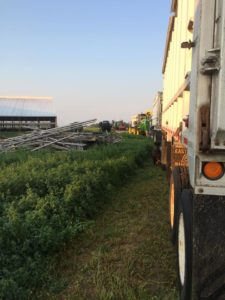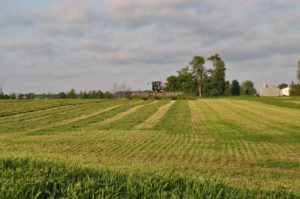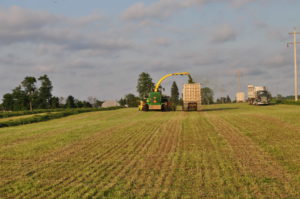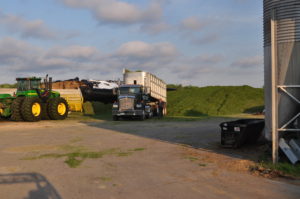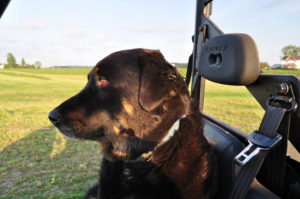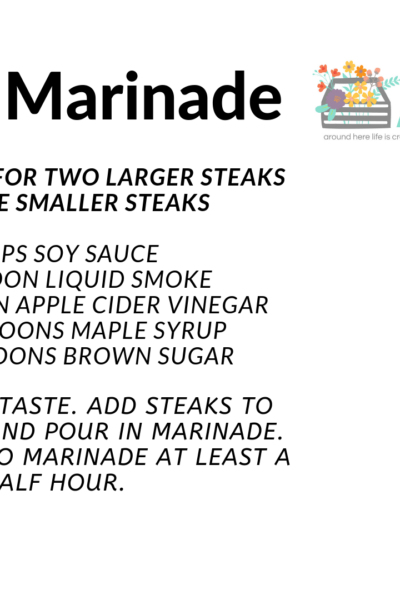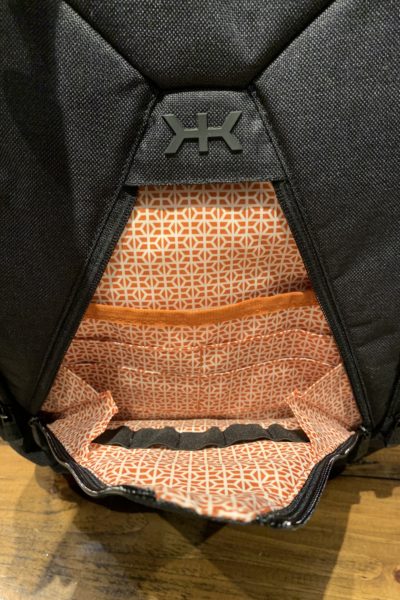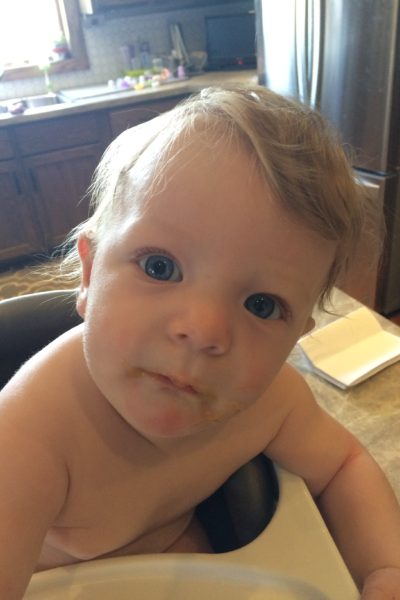After the holiday weekend I decided to take a big break from blogging. OK, I’ll be straight. I was lazy and didn’t feel like blogging. For the record, my house duties got neglected too so needless to say, I have a lot to catch up on this week. On my Facebook page I promised I would talk about harvesting haylage. After I shared a picture of all of the equipment I had two people say they would be interested in reading about how we make haylage. So that means 6 of you will actually be interested in this. For the record, I have a recipe for later in the week so hold on for a few days.
What is haylage and why do we feed it is the obvious next question. I am going to assume you know nothing about farming. When we plan for feeding out cows, we have to plan for the whole year at a time. Which means we need to make feed that will stay good all year long. Haylage is what we call a silage and it is just made out of hay. Hence the name haylage which probably seems strange to you. Trust me, once you get used to it, it will just roll off the tongue. Preserving feeds for cows is similar to what you do if you freeze or can foods. We are working to have these summer foods in times of the year when you can’t get them fresh. The route is different than freezing or canning. We have two ways to preserve feed, we either dry it or we make it into a silage. When we make a silage we cut the hay or corn at an ideal percentage of moisture.
The hay is all spread out in the wind and the sun. This allows the hay to dry some before we start to pick it up. We do not want it to be too wet because we will have problems later that I will describe. But we also do not want it too dry because that causes other problems. Once we are sure it is close to ideal we do something called merge it. Merging simply picks up several rows of hay and combines it into one stack. By doing that you are making the rest of the process easier.
The next part is to chop the hay. What the chopper does is it picks up the hay and it chops it into smaller pieces. The hay is very long after it gets cut because when you cut the hay you literally cut it into a piece. If the hay was one foot long then you have a one foot long piece of hay laying on the ground. That piece is too long for a cow to eat and enjoy and it is very hard to deal with later in harvesting and feeding. The chopper will cut each piece of hay into several smaller pieces and it then shoots it into a big semi-trailer. The semis then deliver the feed to our storage area.
Once the semi is in the storage area they dump it into a huge pile. There is a tractor there doing what we call packing the pile. It tries to pack the silage pieces as tight as it can. This serves two purposes; it allows us to fit more feed in one area and it also removes air from between the pieces.
Removing air from the pile is important because we are preserving this feed for a long time. We do that by fermenting it. When the pile is full we cover it with 2 layers of oxygen barrier plastic. We then let it set for one to two months and allow it to ferment. When I say ferment, think of alcohol. Alcohol is left to ferment. Cow do not get drunk off the feed because they have a four vat stomach and cannot get drunk like we can. They digest things differently than we do and that is why they cannot get drunk from eating or drinking anything.
Naturally my side kick always has to ride along with me. Whew, that was A LOT of information and equipment. What other questions about haylage or what cows eat?
